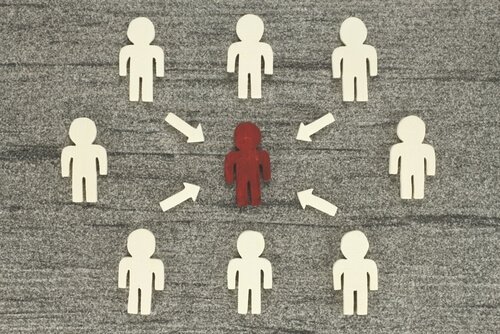Self-concept: Origin and Definition

We can understand self-concept as the idea or image we have of ourselves. It is formed and conditioned by the many roles we play, our goals and objectives, our personality, our ideology and our philosophy, to name a few things. It’s dynamic too, which means it changes over time.
Knowing ourselves helps us to decide what and how we should think and what to do in each situation. This knowledge of oneself be either individual or group identity. The awareness of our identity and that of others makes our life easier and facilitates our relationships.
In psychology, you can study self-concept from different perspectives. Personality psychologists will focus on knowing the content of the identity, creating typologies of it. Social psychology wants to see to what extent it affects our relationships and vice versa.
How is self-concept formed and modified?
Next, we will talk about two theories that explain how self-concept is created or developed. One of them is the theory of self-disagreement, which centers around one’s internal regulation. The other is the mirror ego theory, which centers around social regulation.

The theory of self-disagreement
This theory starts from the basis that a human seeks coherence between the different perceptions he has of himself. Here, other self-concepts come into play. They are:
- The “ideal self” is the self-concept that tells us what we want to become.
- The “responsible ego” is the self-concept that has the idea of what we should become.
- The “potential self” is the self-concept about our potential, to what extent we can become.
- The “expected self” is the self-concept about the prediction of what we can become in the future.
These self-concepts are quite similar to each other. They only differ in small nuances. The important thing about these “selves” is that they create discrepancies with our current self-concept. When one of them is dissonant with our current self-concept, we experience anxiety. From here, the anxiety will motivate changes in the self-concepts to resolve the discrepancy.
For example, if in our “ideal self” we see ourselves as people of community, but we normally behave in a selfish manner, a discrepancy will arise. We can resolve the dissonance in different ways:
- Changing our selfish behavior and, with it, our current self-concept.
- Altering the perception of our behavior, discarding it as selfish and thus altering our current self-concept.
- Changing our “ideal”, adapting it to our current self-concept.
The theory of the mirror self
This vision starts from the creation of self-concept as a process in which society has a lot of weight. The ideas that others have about us is important here. We build the notion of who we are through the information others give us about ourselves.
This is because we perceive that others do have some idea of who we are in their minds. Therefore, we try to find out what it is. We don’t want a discrepancy between the idea that others have of us and our own self-concept. When that dissonance exists, we can solve it in two ways:
- By changing our relationships with others that don’t see us as we think we are.
- By changing the idea we have of ourselves.

This theory explains well why we seek relationships that agree with our self-concept and avoid people who see us differently than how we think we are. It also helps us understand the effects that expectations have on a person, such as the Pygmalion Effect.
An important aspect is that we don’t tend to see ourselves as others really see us, but as we think they see us. We determine how others see us not because of the information we receive from them, but because of our self-perceptions. We create an idea of ourselves, and we think that others see us the same way.
Both theories explain how self-concept is formed and modified in different, but not contradictory, ways. It’s interesting to look at it from a broad perspective, and to understand how the “selves” of the self-disagreement theory can also be created and modified due to social influence. By taking into account the two positions, we get a solid view of self-concept.
This text is provided for informational purposes only and does not replace consultation with a professional. If in doubt, consult your specialist.








